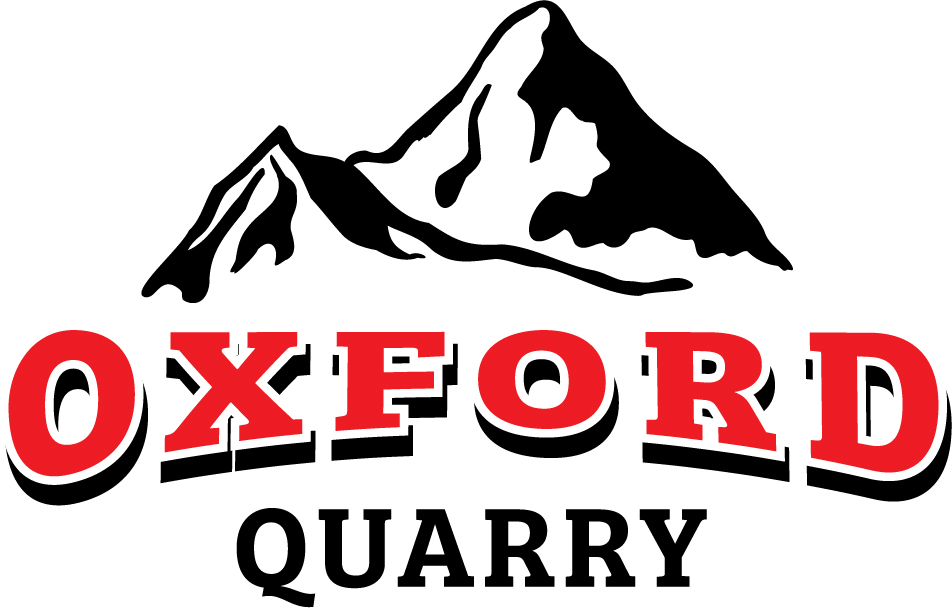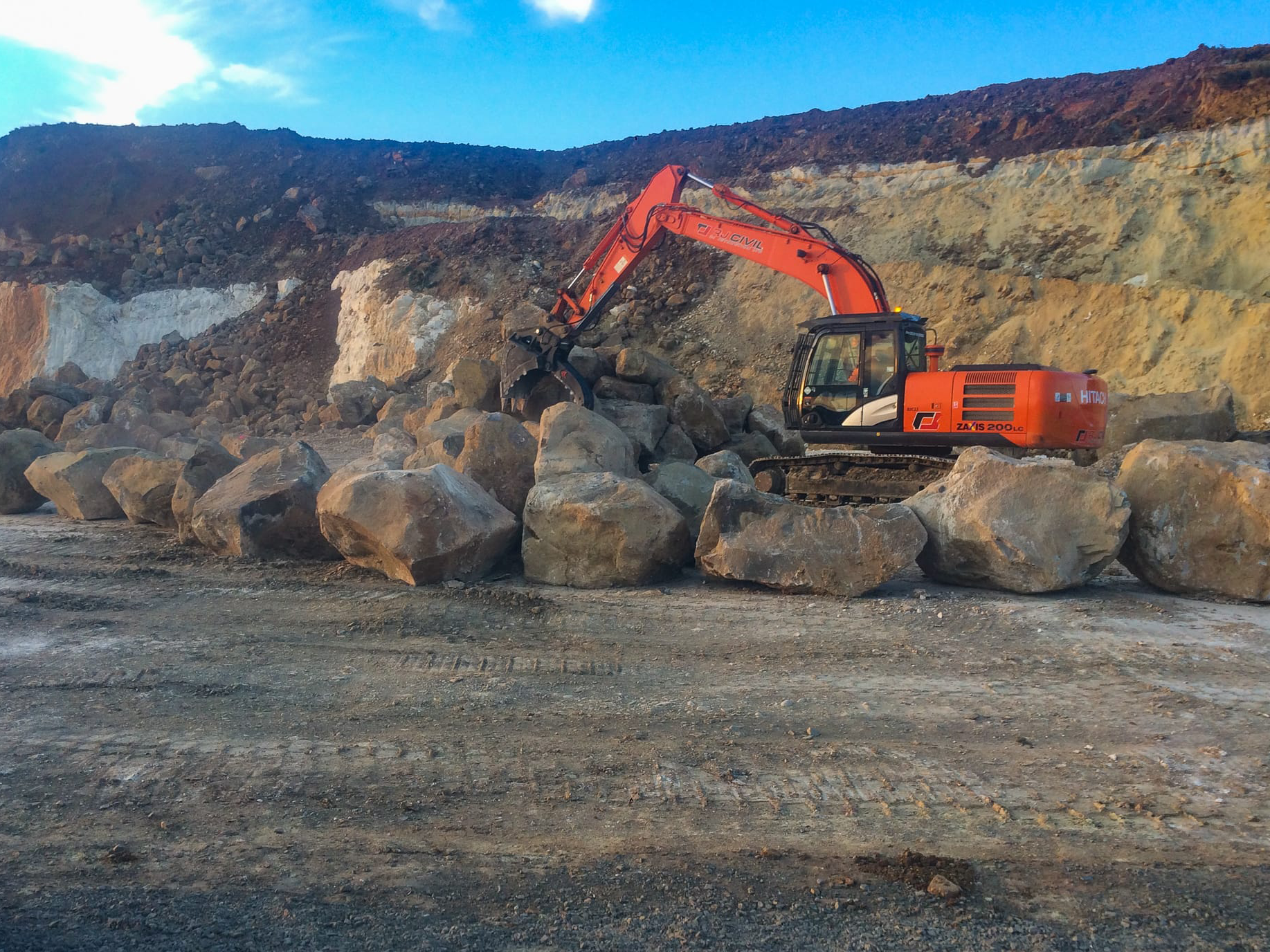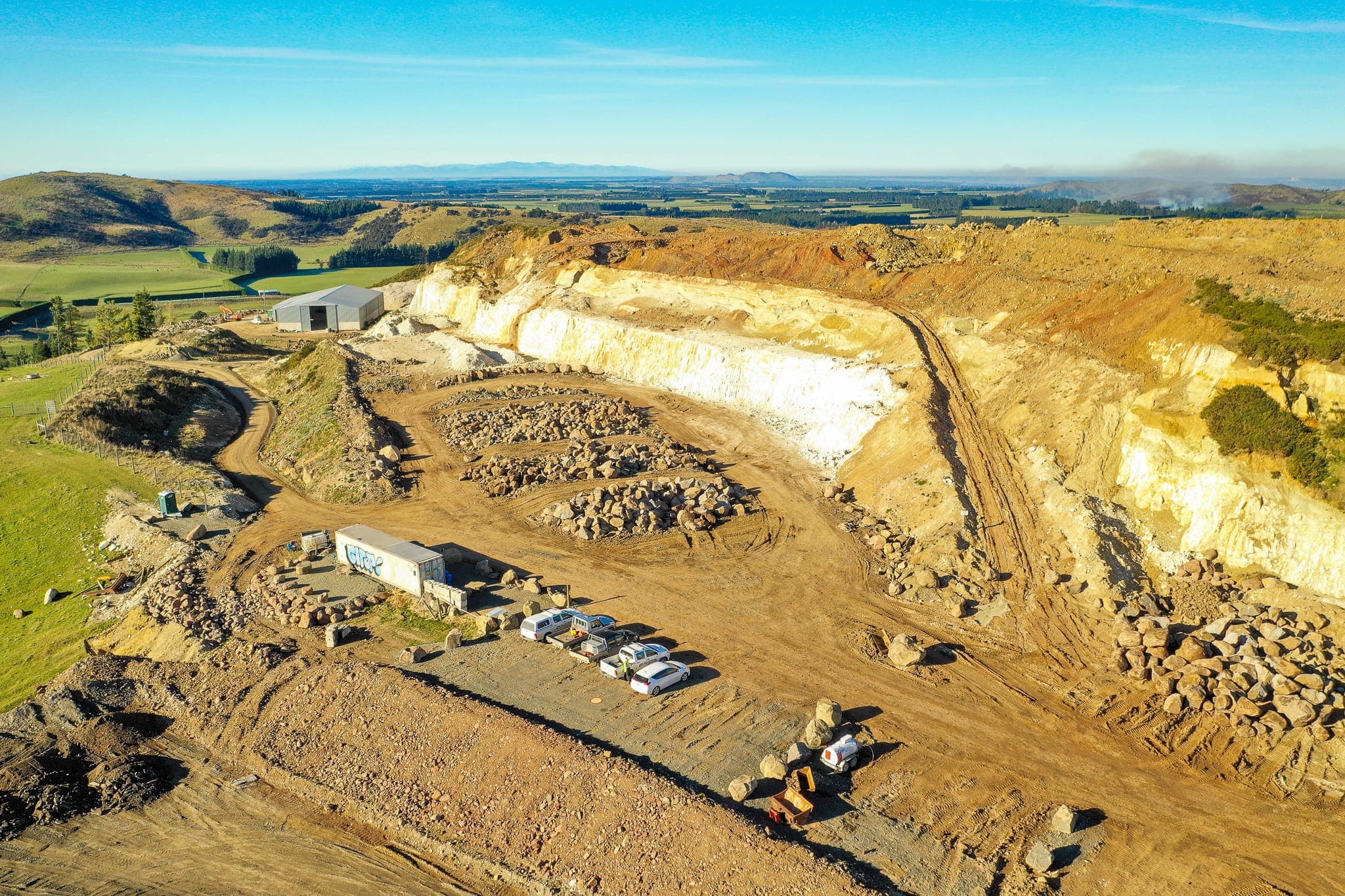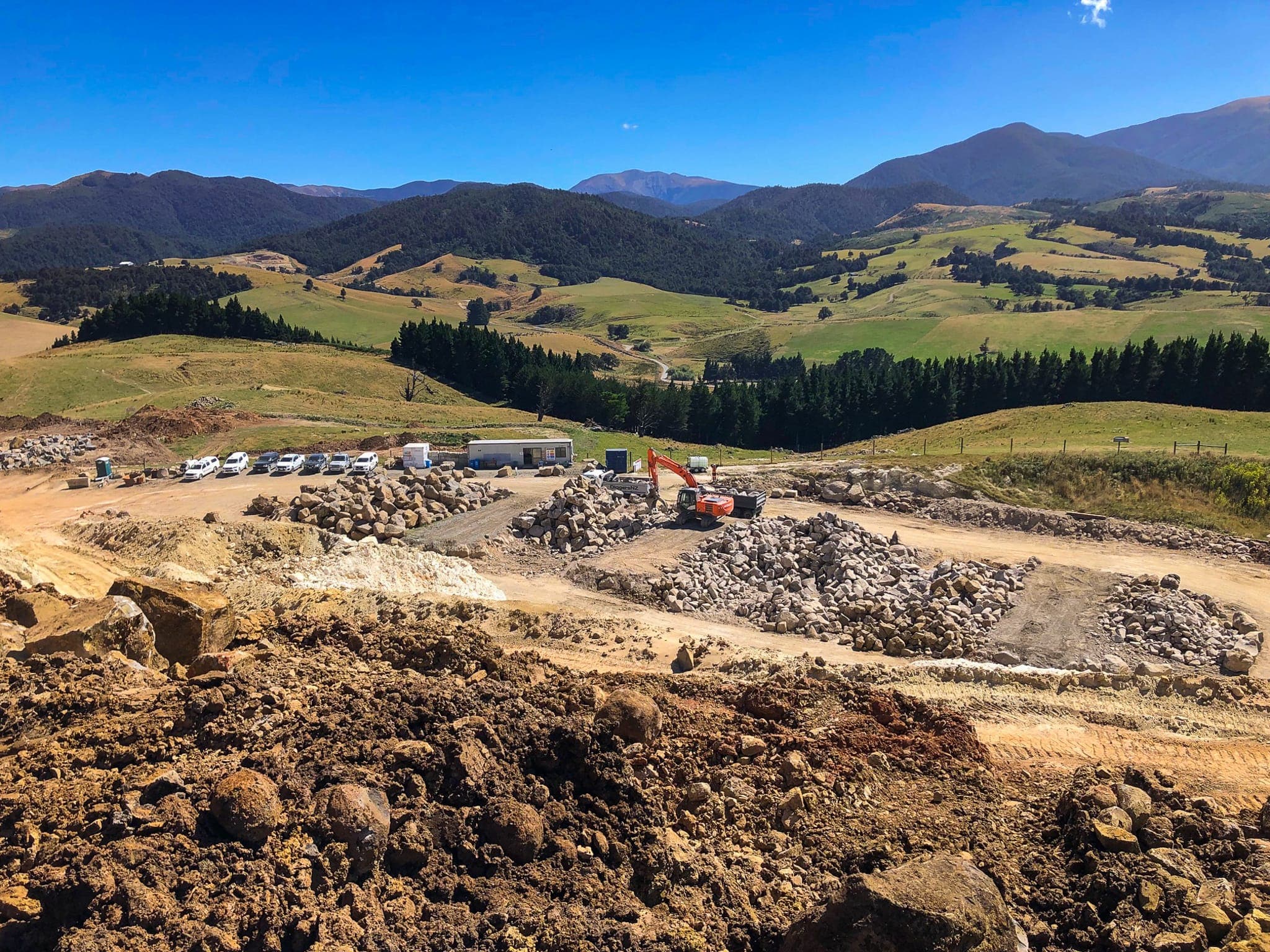Oxford Quarry is located in View Hill which is 16 km west of Oxford, which is on the way to Woodstock. The quarry is 185ha on Chalk Hill which derived its name from The Austin Chalk Company which originally extracted the lime to make wallboard chalk in 1960. The lime is now mainly used for Agricultural purposes.
As can be seen below there are a number of layers within the quarry and more recently the Basalt Rock has been used as Riprap for Seawall and River Protection as well as rock for Stonemason and landscape rock purposes.
There are actually three quarries on Chalk Hill, with differing rock colours, grey/blue, brown and black. The Bentonite Clay can be used for pond lining, well drilling, and cosmetic purposes. The Silica Sandstone can be used for artificial turf, making cast iron moulds, horse arenas and a number of other uses.













